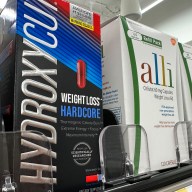torstar file photo
This condo model suite, from Twenty Gothic, manages to incorporate retro elements while maintaining a contemporary, stylish feel.
torstar file photo
This photo from Modern Retro Table Style, by Madeleine Marsh and Thomas Stewart, shows how a few retro pieces can go a long way.
When you think retro, do you think of the cheesy diner decor of the ’50s and ’60s? We used to avoid retro for its kitschy associations. But we’ve since changed our minds, and have decided that retro can be stylish. You can choose the ’50s and ’60s look, or you can choose the delightful ’70s with its curved, generous lines, and its bright, optimistic hues. But whatever you do, don’t go overboard. Too much retro can look crowded, claustrophobic and overdone.
The best way to do retro in our opinion is to mix vintage pieces with your other furniture and accents from different eras or styles to create a stylish, unusual and highly personal look. But don’t just place these disparate pieces together and expect it to just work.
One method we use to create a feeling of unity is to use the repetition of lines. For example, repeat curvy lines as a design element throughout your room, in curved vases and in wavy lines in the carpet, and several rounded globe chairs, for example. Or use stylistic elements with straight lines throughout the room, such as a few chairs with straight tops, combined with square or rectangular vases and a geometric rug.
Using colour can help tie together a collection of items from different eras as well. For example, mix colours in the same colour family — such as whites, creams and light browns — perhaps with a few bright touches, such as orange or yellow. For ’50s retro, these bright touches of colour often include complementary colours, meaning those that are opposite each other on the colour wheel. Examples of these combinations are orange and dark blue, red and royal blue, or violet and yellow.
If you love the ’50s, comb through flea markets, antique or secondhand stores for great items like a mirrored vanity with a dainty chair. Also try places that do reproductions of period pieces. Other sought-after retro pieces include the velvet tufted headboard, vintage perfume bottles and “fainting” or chaise sofas in the bedroom. In the kitchen, chrome-edged tables and matching chairs, and coloured appliances with rounded corners and gently curved lines work well as retro pieces. (See www.elmirastoveworks.comfor some repros of retro appliances.) Avoid cluttering with all the “retro” diner decorations from this era. That would be a definite design crime! If you must, be selective and display only a few well-chosen pieces.
The “space age” look also crept in during this period. Ultra-modern-looking items seemed to have some connection to science or space — the “orb” clock which has the look of the head of a spacesuit, plastic globe seats made entirely of synthetic materials, or the ball clock which looks somewhat like an atom with electrons. Hanging lamps are often round and look like orbiting planets. Check out www.retroline.comor www.circa50.comfor ideas.
The ’60s was all curved lines and psychedelic colours, globe chairs, wavy vases and sculptures, shag rugs and textured macramé wall hangings. Oranges, browns and yellows were popular colours in fabric and wallpapers, and these were usually patterned with huge flowers or wavy rainbows.
The ’70s, for those of us who remember, were characterized by spinning disco balls, lava lamps, sparkly form-fitting fabrics, big belts and buckles, and rhinestones. If you’re looking for treasures from this era, you may have to look no further than local garage sales.
Retro decor is, above all else, about having fun with your interior space. Trust your eye, but proceed with the goal of showcasing your great retro finds rather than burying them in kitsch.
Catch Arresting Design on W Network; see www.wnetwork.com.
















